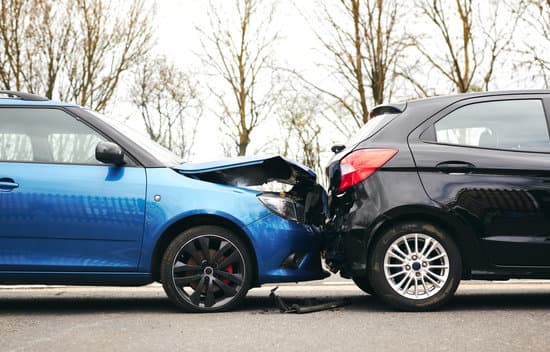Maximizing Your Auto Insurance: Personal Injury Protection Explained

Personal Injury Protection, or PIP, is a vital component of many auto insurance policies. Although PIP coverage is mandatory in no-fault states, it remains optional in others, often leading drivers to overlook its benefits. Yet, PIP offers unique coverage advantages that go beyond standard auto liability insurance or health insurance policies, providing immediate financial support when you need it most. This guide aims to explain how PIP works, why it’s an essential part of a comprehensive auto insurance strategy, and how drivers can make the most of it.
Whether you’re a new driver seeking a better understanding of PIP or an experienced policyholder looking to optimize your coverage, this article will equip you with insights and practical tips on leveraging PIP to protect yourself and your loved ones.
Table of Contents
- What is Personal Injury Protection (PIP)?
- How Does PIP Coverage Work?
- Key Benefits of PIP Coverage
- How PIP Differs from Health and Liability Insurance
- How to Maximize Your PIP Coverage
- PIP in No-Fault vs. At-Fault States
- Common Misconceptions About PIP
- Making Informed Decisions: How Much PIP Coverage Do You Need?
- PIP vs. Medical Payments Coverage
- Conclusion
1. What is Personal Injury Protection (PIP)?
Personal Injury Protection (PIP) is a type of auto insurance coverage that pays for medical expenses and other related costs after an accident, regardless of fault. Unlike typical liability insurance that only covers others’ injuries and damages if you’re at fault, PIP covers you, your passengers, and sometimes pedestrians involved in the accident. PIP aims to streamline claim processing, provide immediate financial relief, and support recovery by reducing the stress of handling extensive bills.
2. How Does PIP Coverage Work?
PIP coverage works by offering benefits after an auto accident, typically with a focus on medical expenses but often extending to additional costs that standard insurance does not cover, including:
- Lost wages if injuries prevent you from working.
- Rehabilitation costs like physical therapy to aid recovery.
- Essential services that help with tasks you can’t perform due to injury, such as household chores or child care.
- Funeral expenses in the event of a fatal accident.
PIP claims are usually filed directly with your own insurance provider, expediting payment and minimizing stress.
3. Key Benefits of PIP Coverage
PIP offers several unique benefits that enhance your protection beyond standard auto liability insurance:
- Coverage regardless of fault: PIP provides support whether you caused the accident or not.
- Faster claim processing: Because PIP is handled by your own insurer, claims are typically processed more quickly.
- Broader coverage than medical insurance: PIP covers a wider range of costs, including non-medical expenses like lost wages and essential services.
- Financial peace of mind: By covering expenses upfront, PIP allows you to focus on recovery without worrying about initial costs.
4. How PIP Differs from Health and Liability Insurance
While health and liability insurance both offer important protections, PIP serves distinct purposes:
- Health Insurance vs. PIP: Health insurance may cover medical bills but usually does not cover lost wages, essential services, or funeral costs. Additionally, health insurance often includes deductibles or co-pays, which are not part of PIP claims.
- Liability Insurance vs. PIP: Liability insurance covers other parties involved if you are at fault in an accident, but it does not cover your own injuries or expenses. PIP fills this gap by providing coverage for you and your passengers.
5. How to Maximize Your PIP Coverage
To fully benefit from PIP, consider the following tips:
- Review your PIP limits: Assess your state requirements and your personal financial needs, then choose a PIP limit that provides adequate protection.
- Opt for higher limits if affordable: Although higher limits mean a slightly higher premium, they ensure you’re well-protected in the event of a serious accident.
- Coordinate with health insurance: Use PIP to supplement health insurance for a more comprehensive coverage package.
- Use PIP benefits for non-medical expenses: Take advantage of PIP’s ability to cover lost wages, essential services, and rehabilitation.
6. PIP in No-Fault vs. At-Fault States
PIP is required in no-fault states, where each driver’s own insurance covers their expenses regardless of fault. This structure simplifies claim handling and reduces litigation, as insurers automatically cover their policyholders’ losses. In at-fault states, PIP is usually optional, providing an added layer of protection for those who want it.
7. Common Misconceptions About PIP
Several myths surround PIP coverage, leading some drivers to misunderstand or underestimate its value:
- Myth #1: “Health insurance is enough.” In reality, PIP covers additional costs like lost wages and essential services, making it a valuable supplement.
- Myth #2: “PIP is only for severe accidents.” PIP can be beneficial even for minor injuries, covering medical co-pays and deductibles without impacting your health insurance.
- Myth #3: “PIP is too expensive.” In most cases, PIP is relatively affordable, especially when considering the extensive coverage it provides.
8. Making Informed Decisions: How Much PIP Coverage Do You Need?
Choosing the right PIP coverage depends on various factors:
- State Requirements: Check your state’s minimum PIP requirements and decide if you need additional coverage.
- Financial Needs: Consider your income, dependents, and current medical coverage to determine how much PIP will protect you.
- Cost-Benefit Analysis: Higher limits mean higher premiums, but the additional coverage may be worth it if you want comprehensive protection.
9. PIP vs. Medical Payments Coverage
Many drivers wonder if they should choose PIP or Medical Payments (MedPay) coverage. Here’s a comparison:
- PIP: Covers medical bills, lost wages, essential services, and funeral expenses. It’s required in some states and optional in others.
- MedPay: Primarily covers medical expenses up to a set limit and does not include lost wages or essential services.
For those seeking more extensive protection, PIP is generally the preferred choice, while MedPay can serve as a minimal supplement for medical bills.
10. Conclusion
Personal Injury Protection (PIP) is an invaluable component of a well-rounded auto insurance policy. By covering a range of expenses beyond medical bills, PIP provides unique benefits that can ease the financial burden of recovery after an accident. Whether mandated by state law or chosen as an optional add-on, PIP offers financial support for drivers and passengers alike, covering medical costs, lost income, and essential services.
Understanding how PIP functions, the myths surrounding it, and how to tailor your coverage to fit your needs will empower you to make the most of this coverage. For anyone seeking peace of mind and a safety net in times of need, PIP stands out as an essential part of auto insurance that shouldn’t be overlooked.


